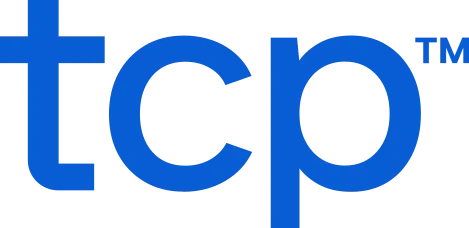Keeping your workforce running smoothly takes more than hopes and dreams. You need a system, especially when it comes to employee scheduling.
Whether you’re running a healthcare clinic, a busy restaurant, a retail chain, or a manufacturing floor, you know how much time, money, and energy go into getting your schedules right. Manual scheduling might have worked when your team was small or your operations were simple.
But as your organization grows, the cracks start to show. You spend hours chasing down shift confirmations or scrambling to cover absences and slip-ups. It’s exhausting, inefficient, and worst of all, it distracts you from supporting your team and moving your organization forward.
In this guide, you’ll learn the pros and cons of manual vs. automated employee scheduling, why automated employee scheduling software offers a better path, and how to make the switch without missing a beat.
What manual employee scheduling really costs you
You already know how it feels to be stuck relying manual methods. Spreadsheets, paper charts, and endless email threads create more work than they solve. Sure, these tools might seem familiar and low-cost, but they create hidden burdens that add up fast:
- You’re stuck in admin mode, copying shifts, tracking changes, and checking coverage.
- You’re constantly at risk of double-booking, missing compliance rules, or overlooking time-off or PTO requests.
- You’re forced to scramble when last-minute changes pop up — and they always do.
- Or for an industry-specific example, a healthcare clinic, when patient care is on the line, every shift matters, every handoff counts, and every gap creates risk. And if you’re still using manual employee scheduling — spreadsheets, paper charts, or basic calendars — you’re probably feeling the pressure.
Manual employee scheduling drains your time and energy, and over time, it can damage your team’s trust, satisfaction, and performance, eroding employee retention.
How automated scheduling changes the game
Automated employee scheduling software redefines how you manage your workforce. Instead of manually piecing together shifts, you set the rules — availability, qualifications, labor laws, and business needs — and let the system do the heavy lifting.
Think back to that busy healthcare clinic we mentioned earlier. Automated scheduling means you’re no longer stuck calling down a list of nurses or hoping someone picks up to cover a shift. What once took you hours now takes minutes because the system automatically identifies who’s available, sends instant notifications, and lets employees accept or swap shifts from their phones.
And that’s just one example.
Whether you’re managing multiple restaurant locations, coordinating manufacturing line coverage, or balancing a retail team’s busy season, automated scheduling tools adapt to your specific needs and keep everything running smoothly.
With the right software, you get:
- Automated shift assignments that fit your coverage needs
- Real-time updates and mobile notifications
- Easy integrations with payroll management, time tracking, and HR systems
- Insights into labor costs, overtime, and staffing patterns
Sure, you’re saving time. But really, automated scheduling is about gaining control to create a smoother, more reliable operation for you and your team.
The head-to-head comparison: Manual vs. automated employee scheduling
Let’s break it down across the areas that matter most to your organization.
Efficiency and time savings
Manual employee scheduling eats up hours every week. You’re juggling spreadsheets, emails, texts, and last-minute updates, just trying to keep the wheels turning.
Automated employee scheduling gives you dozens of hours back every month. The software handles scheduling, adjustments, and communication so that you can focus on higher-value work like training, leading, and improving operations.
Accuracy and compliance
Manual systems expose you to mistakes — it’s easy to miss compliance rules, miscalculate overtime, or assign the wrong person to a shift.
Automated scheduling protects you by applying compliance rules automatically. The system catches issues before they become problems, reducing legal and financial risks.
Flexibility and adaptability
When someone calls out or business demands shift, manual schedules can’t keep up. You’re the one dealing with the fallout by yourself, scrambling, making calls, and hoping for the best.
Automated scheduling adapts in real time. You can rebalance shifts, send updates to employees, and keep everyone aligned — without the panic.
Employee satisfaction
If you’ve ever heard your employees complain about unfair schedules or last-minute changes, you know how damaging manual methods can be.
Automated scheduling gives your team more visibility and control. With self-service tools for shift swaps, time-off requests, and real-time updates, your employees stay informed, engaged, and satisfied.
Scalability and growth
Manual scheduling might work when you’re just a few people, but as you add locations, teams, and roles, it becomes unmanageable.
Automated scheduling software scales with you. Whether you’re running one location or one hundred, the system keeps everything organized and under control.
Cost and return on investment
Manual scheduling might seem free, but the hidden costs — admin time, compliance mistakes, payroll errors, and turnover — add up fast.
Automated scheduling requires investment, but it pays off. You cut labor waste, improve efficiency, and get better control over your workforce costs.
The “manual scheduling isn’t working anymore” checklist
If you’re wondering whether it’s time to upgrade, ask yourself:
- Are you frequently scrambling to cover shifts or manage callouts?
- Are your managers spending too much time on admin tasks instead of leading?
- Are payroll errors or overtime costs creeping up?
- Are employees frustrated with fairness, communication, or consistency?
- Are you struggling to coordinate schedules across locations or teams?
If you answered yes to even a few of these, you’re already paying a heavy enough price in problems and frustrations. It might be time to explore automated employee scheduling software.
How automated employee scheduling benefits your organization
Yes, automated scheduling makes your life easier. But “easy” is just the start — if you’re looking for tangible ROI and concrete examples of improvement across your entire operation, there are plenty to look forward to.
Let’s break down how automated employee scheduling software elevates the way you work, plus what it delivers to your team and bottom line.
Optimized operations
You gain a centralized hub where everything comes together: employee availability, time-off requests, shift approvals, and real-time updates. No more piecing together information from scattered emails or sticky notes (as much as we love them).
You can build, review, and adjust schedules quickly, ensuring everyone knows where to be and when. No more confusion, and no more scheduling mistakes that cost you.
Maintain compliance
Labor law compliance, union agreements, and company policies are baked directly into an automated scheduling system. Tracking every rule by hand? Worrying about falling out of compliance? Leave that in the past with manual scheduling.
The software automatically flags potential violations and aligns your schedules with legal requirements, so you can be confident you’re in the clear. You’re not only safeguarding your organization — you’re also building a fair, consistent experience for your employees.
Happier, more engaged teams
Who doesn’t like having visibility and control over their schedules? Automated scheduling tools let employees check shifts, swap with coworkers, and submit time-off requests from their phones.
That flexibility helps them actually manage work-life balance (instead of being another organization that just talks about it), reduces stress, and builds trust in your leadership. And when employees are happier and more engaged, you see better retention, higher morale, and stronger team performance.
Smarter decisions
With access to real-time data, you can spot patterns, trends, and opportunities you’d miss in a manual system, e.g.:
- Are you consistently running up overtime in one department?
- Are certain shifts always under-covered?
- Are labor costs creeping above your targets?
Automated scheduling software helps you make proactive, informed decisions that strengthen operations and control costs.
Scalability you can count on
Growth brings complexity, but it doesn’t have to bring chaos. Whether expanding your team, opening new locations, or navigating seasonal swings, automated scheduling software scales with you.
One system can manage multiple sites, departments, and roles, so you get a consistent, coordinated experience across your organization. As you grow, you stay agile, efficient, and ready for whatever comes next.
How to switch from manual to automated employee scheduling
Upgrading to automated scheduling can feel like a significant change, but it pays off quickly when you approach it thoughtfully.
Here’s how you can guide the transition:
- Assess where you are – Identify the most significant scheduling pain points and how much they cost you.
- Define what you need – Prioritize the features, integrations, and scalability that matter most to your team.
- Bring in the right voices – Involve managers, HR, IT, and frontline employees to build buy-in and confirm the system works for everyone.
- Choose a strong solution – Look for software with a proven track record, solid support, and the flexibility to fit your operations.
- Roll it out with care – Communicate clearly, provide training, and use pilot phases and feedback loops to smooth the transition.
Put time back in your day with automated employee scheduling
Manual scheduling might have carried you this far, but it’s not built for the demands your organization faces today in a constantly evolving economic climate. Automated employee scheduling software gives you the tools, flexibility, and insights you need to manage your workforce more effectively and confidently.
We’ve shown you why outdated manual scheduling strategies weight you down, and what the alternative looks like — time savings, automation, compliance benefits… well, you read the list.
If you’re ready to reduce risk, improve efficiency, and strengthen your team, you can start exploring automated employee scheduling software.
Take a closer look at your current scheduling processes, and imagine what you could achieve with a more innovative, smarter approach. The next step is yours.
TCP Software’s employee scheduling and time and attendance solutions have the flexibility and scalability to suit your organization and employees as you grow.
From TimeClock Plus, which automates even the most complex payroll calculations and leave management requests, to Humanity Schedule for dynamic employee scheduling that saves you time and money, we have everything you need to meet your organization’s needs, no matter how unique.
Plus, with Aladtec, we offer 24/7 public safety scheduling solutions for your hometown heroes.
Ready to learn how TCP Software takes the pain out of employee scheduling and time tracking? Speak with an expert today.



